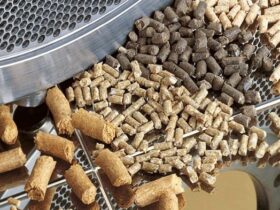Before going to the shelves of building stores and markets, building materials must go through a number of testing activities and obtain the appropriate quality certificates..
What is checked and what determines the quality of such products?
Size, shape, density and some other physical indicators are certainly carefully checked, but the main parameters for determining quality are environmental and fire safety, durability, strength, etc. Each type of material has its own tests, standards and regulations. To determine the quality of different materials, different research methods are used, different equipment, including fire equipment, the number and parameters of samples.
We all know how important fire safety is in production, offices and construction sites. Standard fire fighting equipment is used to ensure this, but it is also important to ensure that appropriate safe materials are used..
Let's start with one of the most important characteristics for any building material — fire safety. To check the building materials from this point of view, the sample is placed in a furnace made in the form of a tube, the temperature in which is about 7500C, after which it is taken into account whether the sample caught fire, how the temperature in the furnace and the mass of the sample changed, etc..
All materials undergo a similar test — finishing, facing, hydro and thermal insulation, roofing, etc. — which are divided into flammable and non-flammable. Non-combustible (group KM0) include granites, stone wool, cements, cement plasters, bricks, and concrete. These materials are the key to the greatest fire safety, and some of them can be used as fire retardant materials, such as stone wool, which can withstand temperatures up to 10,000C..
Combustible materials must pass a series of tests that determine the flammability, smoke generation, toxicity of combustion products and the ability to spread fire. As a result, the material is assigned an alphanumeric designation, in which the letter indicates the indicator, and the number indicates the hazard class.
Combustible materials are divided into classes KM1 — KM5, and this must be taken into account. So, for finishing ceilings and walls on staircases, lobbies, elevator halls, only KM0 and KM1 materials are used..
For materials used in floors and roofs, the ability to spread the flame is important, which is designated from RP1 (non-spreading) to RP4 (highly spreading). Of the roofing materials, we single out those that are based on bitumen — they belong to the third or fourth class, which requires the mandatory use of a non-combustible base and strict adherence to fire safety requirements.
Smoke-generating capacity can be low, medium and high, and the toxicity of combustion products has 4 classes — T1 (low hazard) — T4 (extremely hazardous).
In general, material fire safety checks are about the same. As for the methods of testing consumer qualities, there are differences depending on the type and place of application of the material. Consider how the consumer qualities of the insulation are checked.
For these materials, one of the most important characteristics is thermal conductivity, on which the required amount of insulation in a particular structure depends. To determine the thermal conductivity, one side of the insulation is heated, after which it is determined how much the heat flux has moved to the other side.
For insulation, it is important how they interact with moisture. They must not trap moisture and let steam through so that the building "breathes". Tests determine whether the insulation needs additional steam or water protection.
Roof insulation is tested for "compressive strength", which is best for slabs with two layers of different densities. Tensile strength is tested for plaster facades. This is done by gluing the sample on two surfaces and placing it in a special tensile testing machine..
Building materials certification is based on national, interstate and international standards. In Russia, this is done by organizations accredited in the national certification system. A certificate is a prerequisite for the receipt of goods on sale and confirms compliance with existing standards.

















Оставить коммент.